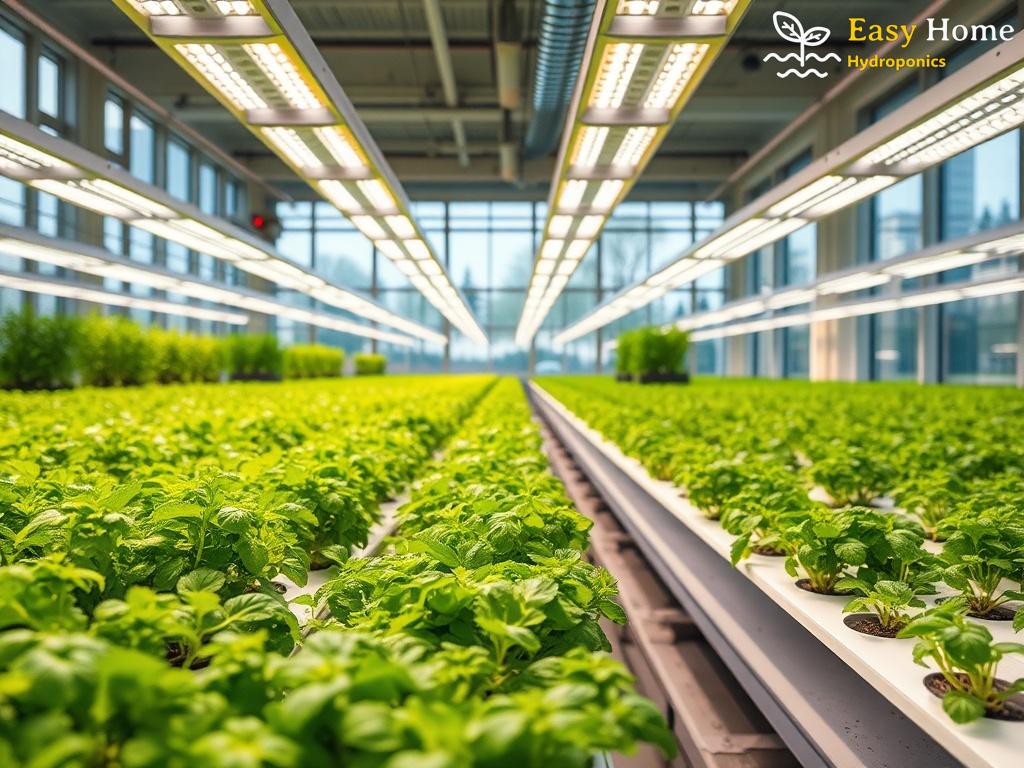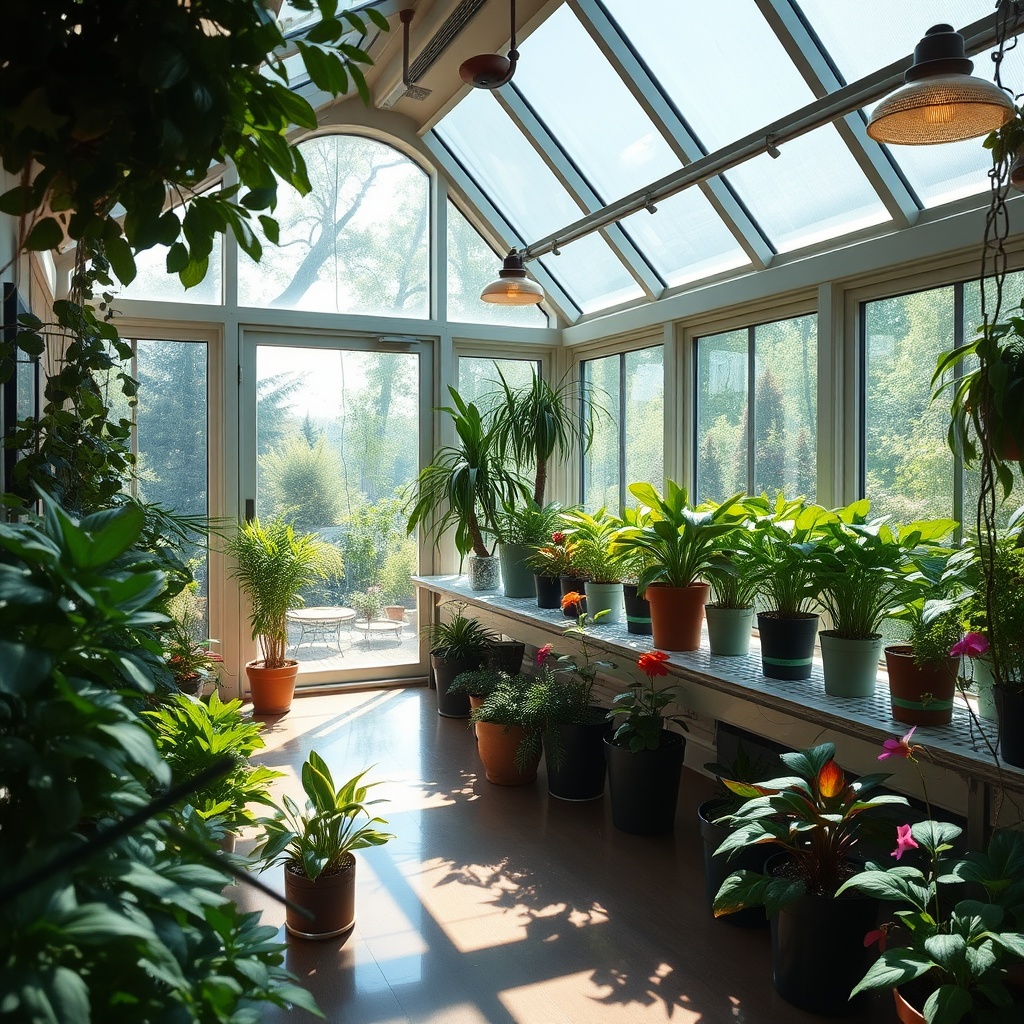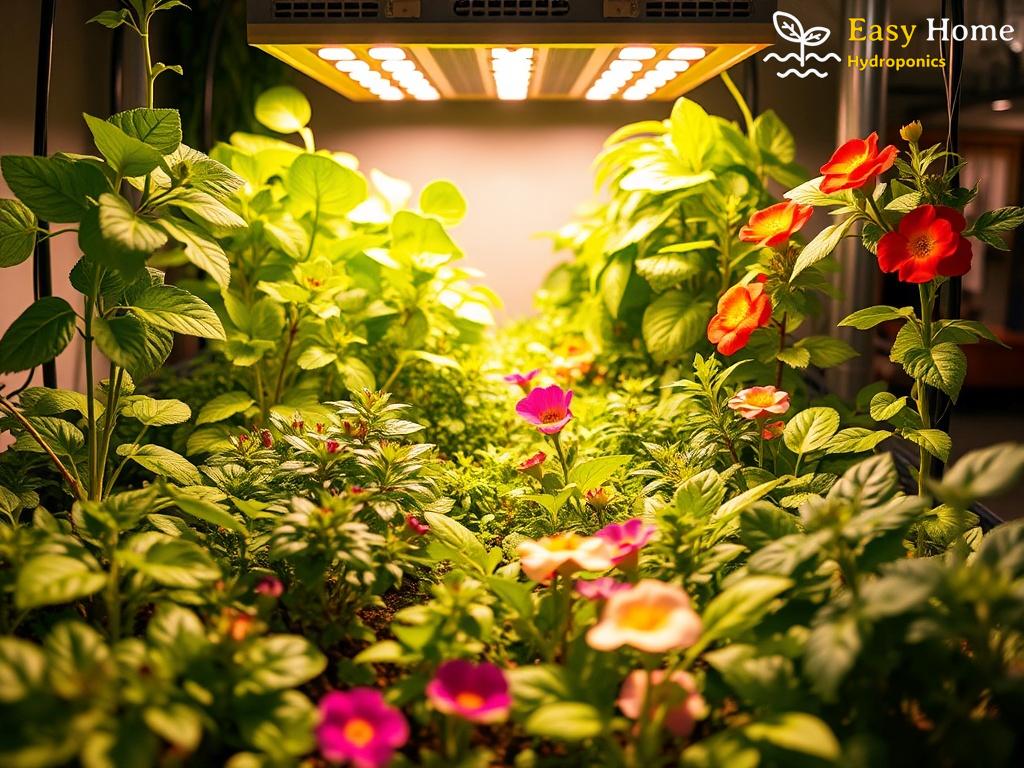The Spectrum of Success: Choosing the Right Light
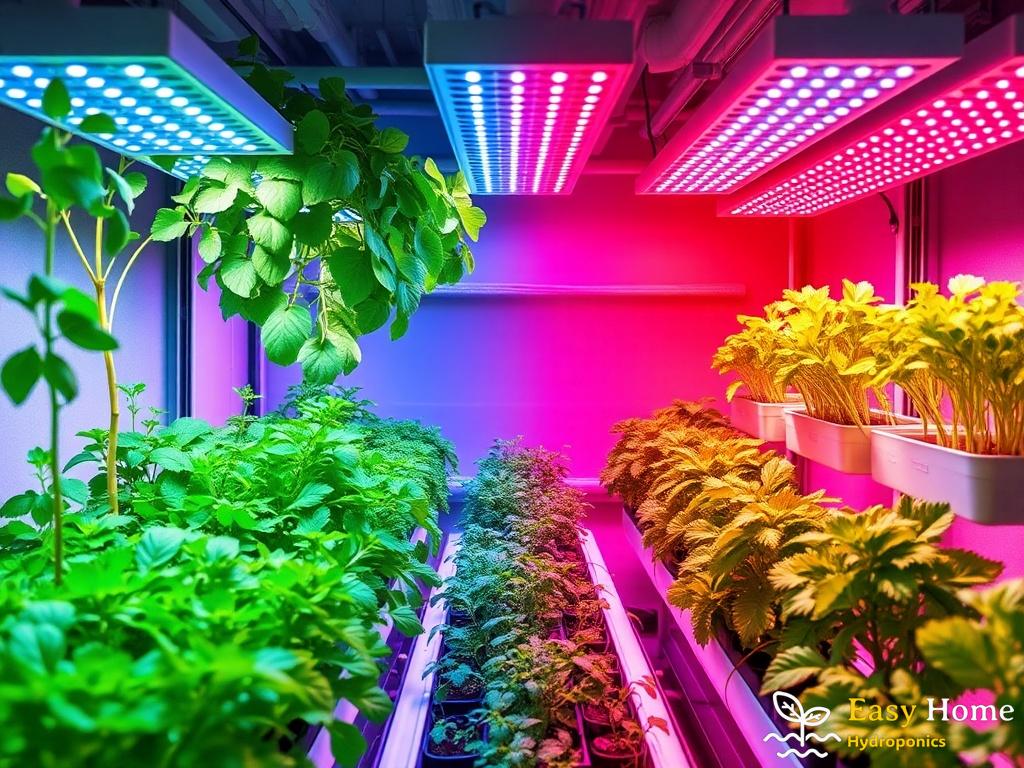
The Power of Light in Hydroponics
In the world of hydroponics, light is not just a luxury—it’s a necessity. For those cultivating herbs year-round, understanding the nuances of light spectrum is crucial for achieving vibrant growth and maximizing yield. The right lighting can transform your hydroponic setup from mediocre to magnificent, ensuring that your herbs thrive regardless of the season.
Understanding Light Spectrum
Light spectrum refers to the range of wavelengths emitted by a light source, and each wavelength plays a specific role in plant growth. For hydroponic growers, it’s essential to harness the right combination of light to stimulate photosynthesis effectively. The primary light spectrum components include:
- Blue Light (400-500 nm): Promotes vegetative growth and is vital for leaf development.
- Red Light (600-700 nm): Encourages flowering and fruiting, essential for herb production.
- Green Light (500-600 nm): While not directly utilized for photosynthesis, it penetrates deeper into the plant canopy.
By understanding and utilizing these components, growers can optimize their lighting systems to create an ideal environment for herb cultivation.
Choosing the Right Lighting Technology
With a plethora of lighting options available, selecting the right technology can feel overwhelming. Here’s a quick comparison of the most popular types of grow lights:
| Type of Light | Pros | Cons |
|---|---|---|
| LED | Energy-efficient, long lifespan, customizable spectrum | Higher initial cost |
| Fluorescent | Inexpensive, good for seedlings | Lower intensity, shorter lifespan |
| HID (High-Intensity Discharge) | High output and intensity, good for large setups | High heat output, requires additional cooling |
When choosing your lighting system, consider factors such as your specific crop needs, energy costs, and available space. The optimal light choice can greatly affect the success of your hydroponic herb production.
Maximizing Growth: Light Duration and Intensity

Understanding the Importance of Light Duration
In the realm of hydroponic herb farming, the interplay between light duration and intensity can be the key to unlocking a lush and vibrant garden. Plants, much like us, thrive on routine, and the daily cycles of light and darkness play a pivotal role in their growth and development. By mastering light duration, growers can manipulate plant physiology to promote optimal health and productivity.
Light Duration Defined: This refers to the number of hours that plants are exposed to light each day. Research indicates that different herbs require varying light durations to achieve peak growth. For instance, leafy greens often thrive on longer light cycles, while flowering herbs may require less.
Intensity Matters: Finding the Sweet Spot
While light duration sets the stage, the intensity of light acts as the main actor in the production of healthy herbs. Intensity, measured in lumens or PAR (Photosynthetically Active Radiation), determines how effectively plants can engage in photosynthesis. Too little light can stunt growth, while excessive intensity can lead to light burn and stress.
To achieve a perfect balance, hydroponic growers must consider a few key factors:
- Type of Herbs: Different herbs have distinct light intensity needs. For example, basil thrives under high-intensity light, while mint is more forgiving.
- Growth Stage: Seedlings and younger plants often require lower light intensity to avoid shock, whereas mature plants benefit from higher levels.
- Lighting Technology: The choice of lighting technology can also impact intensity. LED systems, for instance, allow for precise adjustments in light output, catering to the specific needs of various herbs.
Optimal Light Duration and Intensity for Common Herbs
Here’s a handy table summarizing the ideal light duration and intensity for popular hydroponic herbs:
| Herb | Light Duration (Hours) | Light Intensity (µmol/m²/s) |
|---|---|---|
| Basil | 14-16 | 200-400 |
| Mint | 12-14 | 100-200 |
| Cilantro | 12-14 | 150-300 |
| Parsley | 12-14 | 150-250 |
By following these guidelines and adjusting light duration and intensity based on the unique needs of each herb, growers can create an environment that is conducive to year-round production. In the world of hydroponics, where every detail matters, mastering light is a crucial step toward achieving flourishing herb gardens.
Energy Efficiency: Balancing Cost and Output
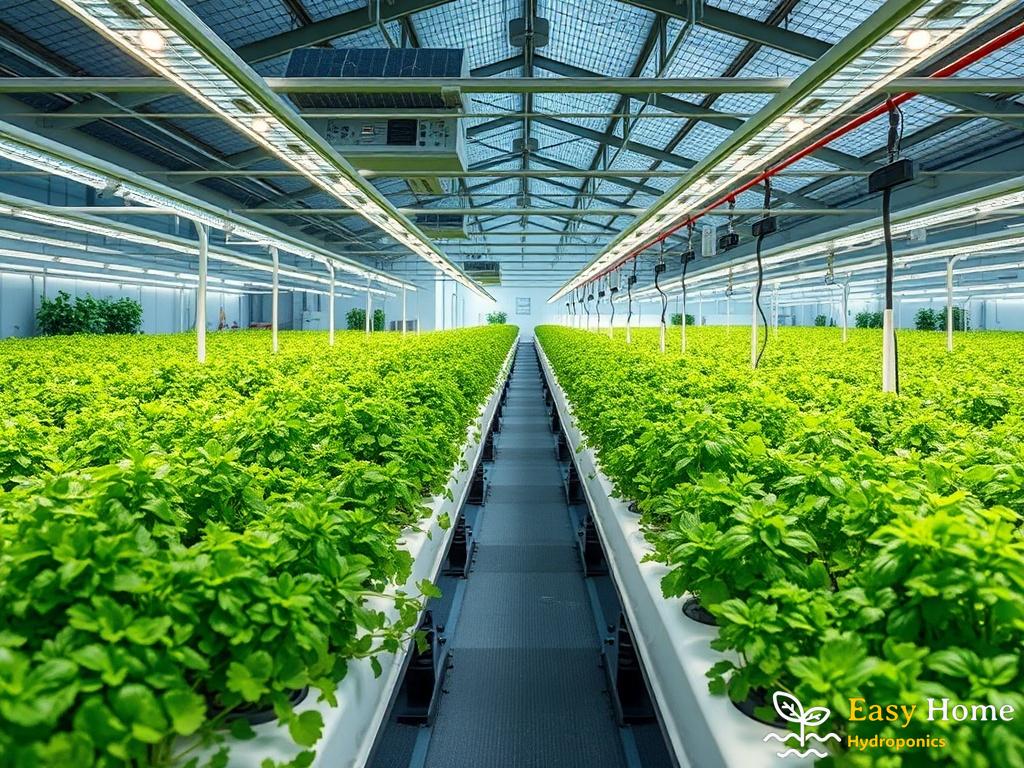
When it comes to cultivating vibrant, healthy herbs in a hydroponic environment, energy efficiency plays a pivotal role in both sustainability and profitability. As growers aim to optimize their setups for year-round production, the challenge often lies in finding the sweet spot between operational costs and the output of high-quality herbs. Understanding the various lighting technologies available and their impact on energy consumption is essential for making informed decisions that can elevate your herb garden to new heights.
Evaluating Energy-Efficient Lighting Options
The market is flooded with lighting solutions, but not all are created equal when it comes to energy efficiency. Each option has its pros and cons, and selecting the right one can significantly influence your bottom line. Below is a rundown of the most common lighting technologies used in hydroponics, along with their energy efficiency:
- LED (Light Emitting Diodes): Renowned for their low energy consumption and long lifespan, LEDs allow growers to customize light spectra to meet the specific needs of herbs, leading to reduced energy costs over time.
- Fluorescent Lights: These lights are cost-effective and suitable for seedlings, but their energy efficiency diminishes as plants mature, often requiring replacements and increasing overall costs.
- HID (High-Intensity Discharge): While providing high output and intensity, these lights consume significant energy and generate heat, necessitating additional cooling systems, which can further inflate energy bills.
Maximizing Output with Smart Practices
To truly harness the power of energy efficiency, growers must go beyond simply choosing the right lights. Implementing smart practices can enhance the overall effectiveness of your hydroponic system, resulting in healthier plants and improved yields. Here are some strategies:
- Light Scheduling: Utilize timers to ensure that lights are only on when necessary, mimicking natural daylight cycles and reducing excess energy usage.
- Reflective Surfaces: Incorporate reflective materials in the growing area to maximize light distribution, ensuring that every plant receives adequate illumination without increasing wattage.
- Regular Maintenance: Keep lighting systems clean and well-maintained to ensure optimal performance; dirty fixtures can reduce light intensity and lead to greater energy consumption.
By thoughtfully integrating these practices, hydroponic growers can significantly enhance the efficiency of their systems, ultimately leading to greater herb production while keeping energy costs in check.
The Role of Light in Flavor Development
The Intricate Connection Between Light and Flavor
In the realm of hydroponics, where conditions can be meticulously controlled, the role of light goes beyond mere growth. It is a pivotal factor in developing the flavor profiles of herbs, influencing everything from sweetness to pungency. As hydroponic enthusiasts strive for the best quality produce, understanding how light affects flavor compounds is essential. The spectrum of light, along with its intensity and duration, intricately weaves into the biochemical processes that ultimately determine the taste of your herbs.
Flavonoids and Light: A Flavorful Partnership
Research has shown that different wavelengths of light can enhance the production of flavonoids and terpenes, two key components responsible for the aromatic and flavorful characteristics of herbs. For instance, blue light has been linked to increased flavonoid production, which can amplify the sweetness and overall flavor complexity of herbs like basil and mint. Conversely, a higher proportion of red light can boost the synthesis of certain essential oils, enriching the aromatic quality of herbs such as oregano and thyme. By tailoring the light spectrum to the specific needs of each herb, growers can not only enhance growth but also elevate the flavor profile.
Creating Flavor-Rich Environments
To cultivate herbs that burst with flavor, growers must consider the balance of light types and their corresponding effects on flavor compounds. A comprehensive light strategy involves adjusting the light spectrum throughout the growth cycle. For example, during the early growth stages, a higher intensity of blue light may be beneficial for establishing strong, flavorful leaves. As the plants mature and prepare for flowering, transitioning to a blend that includes more red light can invigorate aromatic oil production. This strategic manipulation of light not only yields healthier plants but also enhances the flavor experience for the end consumer.
Moreover, the duration of light exposure plays a crucial role in flavor development. Herbs that receive longer light cycles often exhibit more intense flavors, as extended photosynthesis leads to the accumulation of essential oils and compounds. However, it is essential to strike a balance; too much light without adequate darkness can lead to stress, which may negatively impact flavor quality. Growers must remain attentive to their plants’ responses, adjusting light duration to create a harmonious environment that supports both growth and flavor richness.
Seasonal Adjustments: Adapting Lighting for Optimal Yield
Adapting to the Seasons for Maximum Growth
In the dynamic world of hydroponics, the ability to adapt to seasonal changes is crucial for maintaining optimal yield throughout the year. As daylight hours fluctuate with the changing seasons, growers must be proactive in adjusting their lighting strategies to ensure that their herbs receive the right amount of light at the right intensity. This not only supports healthy growth but also enhances flavor and yield, making it imperative for hydroponic enthusiasts to master the art of seasonal lighting adjustments.
Understanding Seasonal Lighting Needs
The seasonal variations in natural light can significantly impact the growth of hydroponic herbs. During the longer days of summer, herbs may thrive with extended light exposure, while the shorter days of winter demand a different approach. It’s essential for growers to recognize these patterns and adjust their lighting systems accordingly. For instance, during winter months, increasing the duration of light exposure can compensate for the lack of natural sunlight, ensuring that plants receive enough energy for photosynthesis.
Moreover, the intensity of light can also be modified based on the season. In the summer, when natural light is abundant, growers can adjust their artificial lighting to lower levels, thereby reducing energy consumption while still promoting robust growth. Conversely, during the darker months, boosting light intensity becomes necessary to stimulate photosynthesis and maintain healthy plant development.
Strategies for Effective Seasonal Adjustments
Implementing effective strategies for seasonal adjustments involves a careful evaluation of light duration, intensity, and spectrum. Growers should consider using smart lighting systems equipped with timers and sensors that automatically adjust to seasonal changes. These systems can optimize light cycles, ensuring that herbs receive the precise exposure they need throughout the year.
Additionally, understanding the specific light requirements of different herbs can lead to more tailored lighting solutions. For example, leafy greens may benefit from longer light cycles in winter, while flowering herbs might require a different balance of light spectrum to enhance their flowering phases. By closely monitoring plant responses and adjusting lighting parameters accordingly, growers can create a thriving environment that maximizes yield and flavor.
| Season | Light Duration (Hours) | Recommended Light Intensity (µmol/m²/s) |
|---|---|---|
| Spring | 14-16 | 200-400 |
| Summer | 12-14 | 150-300 |
| Fall | 12-14 | 150-350 |
| Winter | 14-16 | 200-400 |
By implementing these strategies and maintaining a keen awareness of seasonal adjustments, hydroponic growers can ensure a consistent and thriving herb production cycle that meets the demands of consumers year-round.

